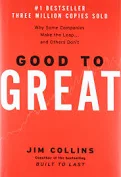Surprising Blog Titles

“If it is broken, don’t fix it”, reads the tile of an article in this month’s issue of Indianapolis Monthly. (Wait — what?) Experts advise, the article relates, that, if it’s going to cost more than 50 percent of the value to fix an item, you’re better off replacing it with a new one. The author was apparently following a piece of advice from the Rob Powers Business Blog: For a catchy title, use the unusual insight, delivering the unexpected. “Write a headline that makes people do a kind of double-take when they read it. Make them wonder and ask if it’s even possible,” says incomedieary.com, citing a National Enquirer piece titled “How Jack the weakling Slaughtered the Dance Floor Hog”.
In two-part titles, we teach at Say It For You, the first part (the “huh?”) needs a subtitle to make clear what the article is about. The second part (the “oh!”) clarifies what the focus of the piece is going to be. Another title from this month’s issue of Indianapolis Monthly is an example of a “Huh?-Oh!”. The “Huh?” – Street Wise (this part could be about a variety of things from infrastructure to drug trafficking). The “Oh!” – : “A new retail space angles to be both sanctuary and style inspiration”, with the article providing details about new streetwear retailer Sanctuary by Streetly.
To a certain degree, in business blog writing, we don’t have the luxury of using totally “mysterious” titles, since search engine algorithms will be matching the phrases used in our titles with the terms typed into readers’ search bars. For that reason, composing business blog post titles involves a combination of art and science, arousing readers’ curiosity and, at the same time, satisfying search engines. The title “Wink Wink”, for example, while a cute name (for a piece about tweed multi-effect eye shadows, is unlikely to link to a search for makeup options. The “Oh!” part of the equally enigmatic “Jump In”, on the other hand, explains that that the article features Bloomington’s Hopscotch Kitchen. “Slice of Life” is about Bargersville Pizza and Libations, while “Make a Break” is about Tennesee’s Maker City. The winning combination, it seems is to arouse curiosity to the point that readers want to find out what the devil that first part of the title means.
Where a lesson learned in one field of activity is applied to a completely different field of activity, those headlines grab people’s attention because they offer a completely new perspective on something, Rob Powell goes on to explain. Promise readers to help them avoid pain or failure, solve problems, and gain insights, but the story begins with surprising blog titles.





Follow us online!